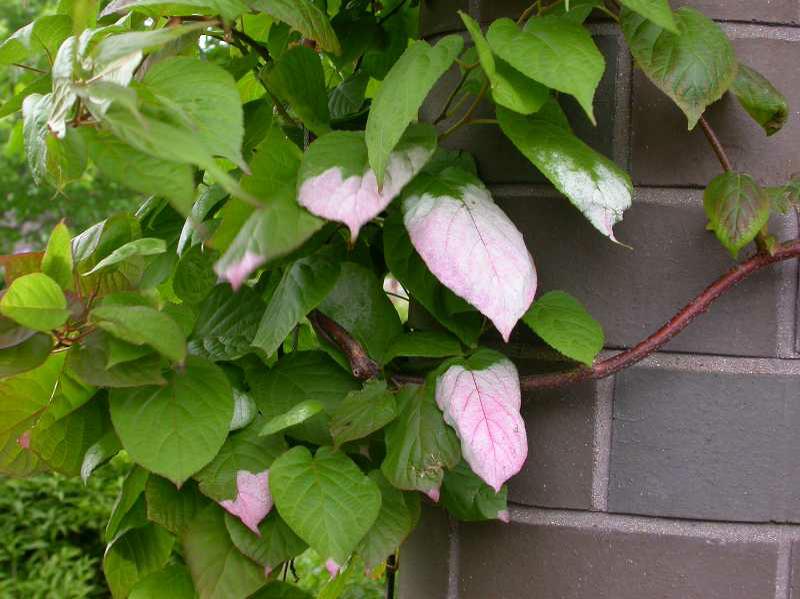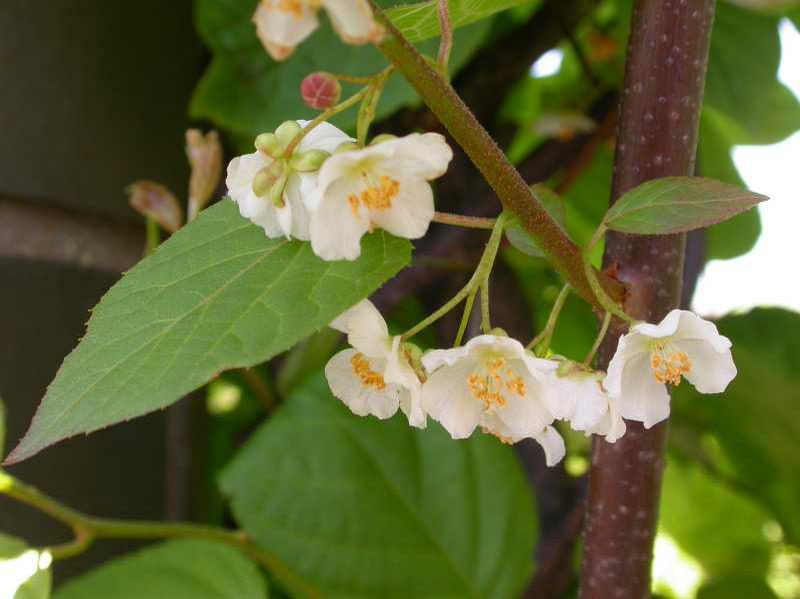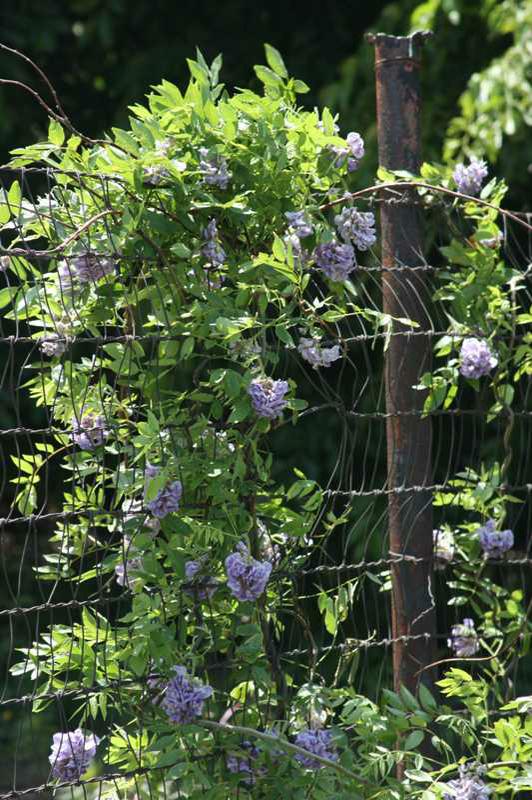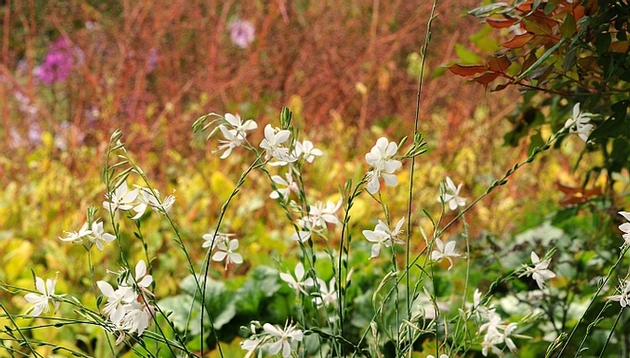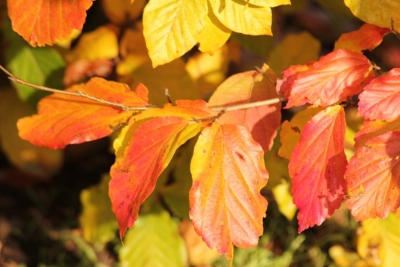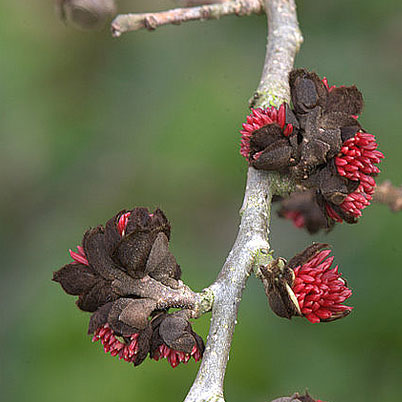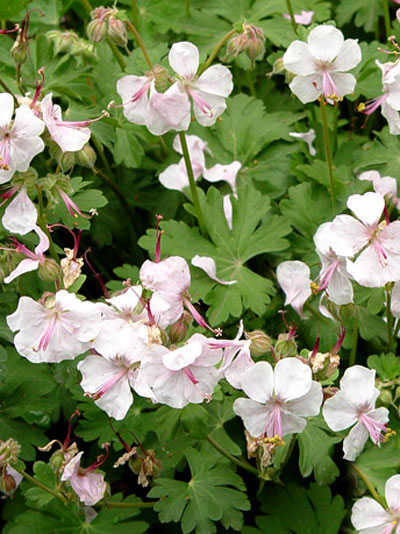
Geranium X cantabrigiense 'Biokovo' in flower
The Perennial Plant Association membership has voted and the 2015 Perennial Plant of the Year™ is Geranium X cantabrigiense ‘Biokovo’.
’Biokovo’ is a naturally occurring hybrid of Geranium dalmaticum and Geranium macrorrhizum found in the Dalmatia region of present-day Croatia. It blooms in late spring with masses of 5-petaled white flowers, about ¾” diameter, that are tinged pink at the base of each petal and have darker pink center stamens. An interesting feature is that the sepals that are redder than the petals, so that when the flower opens the lightly tinged pink flowers provide a nice contrast to the sepals and stamens. It blooms from mid-May to late July.
G. X cantabrigiense has aromatic foliage and rounded leaf edges and is semi-evergreen in most climates. It has a spreading habit and is rhizomatous, i.e. it spreads by sending out runners. It grows to 6-10 inches high, with a spread of about 2 feet. It can be used as a ground cover that spreads fairly rapidly through the perennial bed or as an edger in the front of the border. It also does well in rock gardens. It tolerates full sun to part-shade conditions. Its foliage turns scarlet and orange in the fall.
Another G. X cantabrigiense variety is 'Karmina', because sometimes it matters what color the flowers are!
Geranium X cantabrigiense 'Karmina', seen below, has carmine-red flowers.

The general qualities of Geranium species (commone name "cranesbill") include:
- Deer Resistant (OK, yes, nothing is completely deer-resistant; it is in many places I've planted it)
- Many varieties tolerate some shade
- Bloom for 4 weeks or more
- Rabbit Resistant (again, it depends, but in general they leave it alone)
- Flowers attract butterflies
- Can be used as groundcovers (low spreaders) or bed-fillers (taller varieties)
- Need little care and no division
- Excellent mounding habit as they first start in spring, and some varieties maintain that habit.
- Deeply cut foliage; flowers with interesting veining patterns.
- They can be deadheaded after blooming, or the tops of the plants can be sheared back to new growth to stimulate re-bloom and freshen foliage.
- Many varieties have beautiful red, burgundy or orange fall color that is a stand-out if the plant has been allowed to weave intself throught the garden bed.
Other types of geranium that are useful in different garden contexts, are hardy and fairly care-free include:
- Geranium macrorrhizum (Bigroot Geranium), Z 3-8, 15-18" in height, native to southern Europe, large laromatic leaves. Varieties include 'Bevan's Variety' and 'Ingwersen's Variety', seen in the series of pictures below:

G. macrorrhizum 'Bevan's Variety'
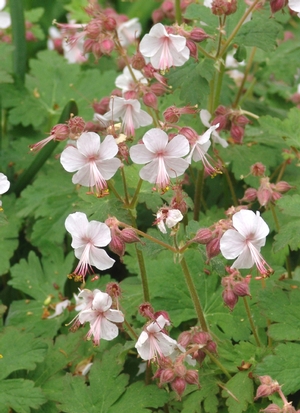
G. macrorrhizhum 'Ingwersen's Variety'
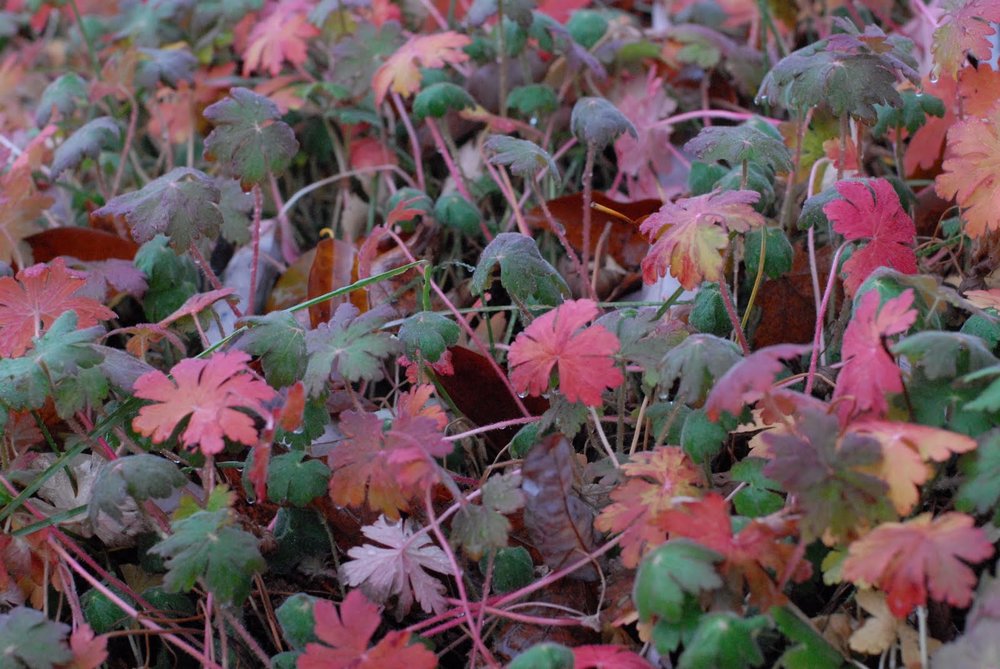
G. macrorrhizum fall foliage color
- Geranium pratense (Meadow Cranesbill), Z 5-7, 24-36" tall, purple flowers from reddish veins on dark blue petals, native to northern Europe, may need staking. Some cultivars have dark foliage; need sun for optimal foliage color. Clump-former; blooms May – July. Cultivars include 'Dark Reiter', 'Midnight Reiter', 'Summer Skies', 'Purple Haze', 'Mrs. Kendall Clark', 'Splish Splash'. G. praetense does spread by seed, so it can pop up here and there throughout the garden - that may be a desirable trait if you're trying to get it to fill in, or an undesirable trait if you only want it in a certain place.
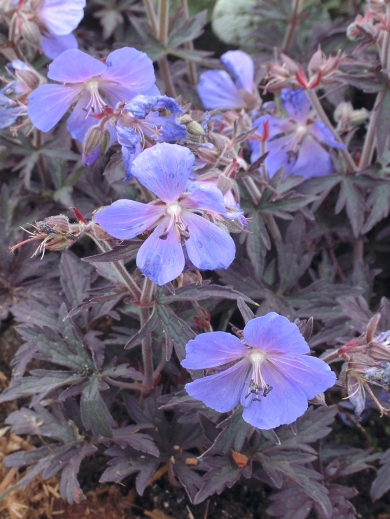
G. praetense 'Midnight Reiter'
- Geranium sanguineum (Bloody Cranesbill) Z 3-8, 9-12", magenta flowers in spring, native to Europe and Asia, tolerates heat and drought; deeply divided leaves, bright red fall color, blooms in spring. Varieties include 'Striatum', 'Max Frei', 'Ankum's Pride'.
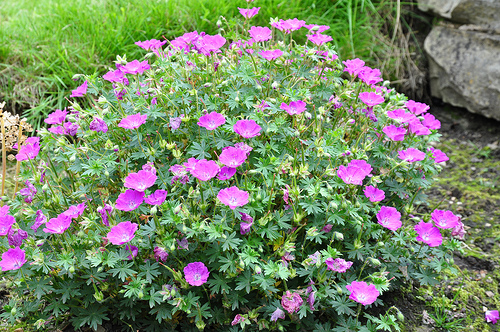
G. sanguineum 'Max Frei'
- Geranium wlassovianum Z 5-8, 18-24" tall; One of the first hardy Geraniums to bloom and one of the last to stop. Dusky violet flowers with deeper veining and a white eye. Fall brings outstanding deep red tones. Trails gently. Will adapt to most soil conditions provided there is good drainage and some moisture. Nice massed as a groundcover, in rock gardens or as an informal edger. Completely carefree.
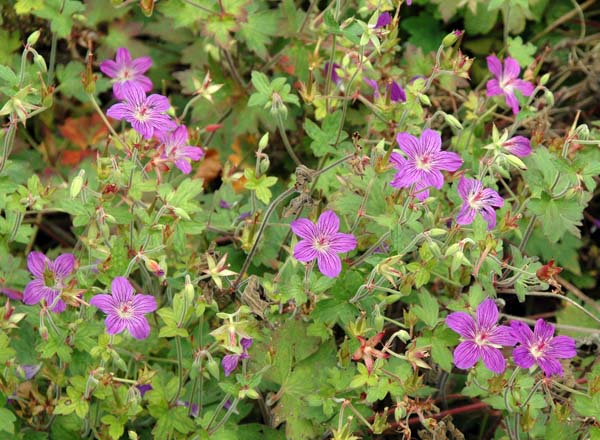

G. wlassovianumG. wlassovianum fall foliage color
- And, of course, Geranium X 'Rozeanne' seen below. Unbelievable quantities of large, violet-blue blooms from June until frost; hardy to Z5; 20" tall with a 2 foot spread; bluish-purple flowers are heightened by black anthers, magenta veins and a radiant white eye. Fiery red leaves in autumn; withstands sunny, hot sites and is happy just about anywhere, from an exposed border to a container. 'Rozeanne' is a naturally occurring sterile hybrid of Geranium himalayense and Geranium wallichianum ‘Buxton’s Variety’. Lynden Miller says "No garden should be without Geranium 'Rozeanne'."




